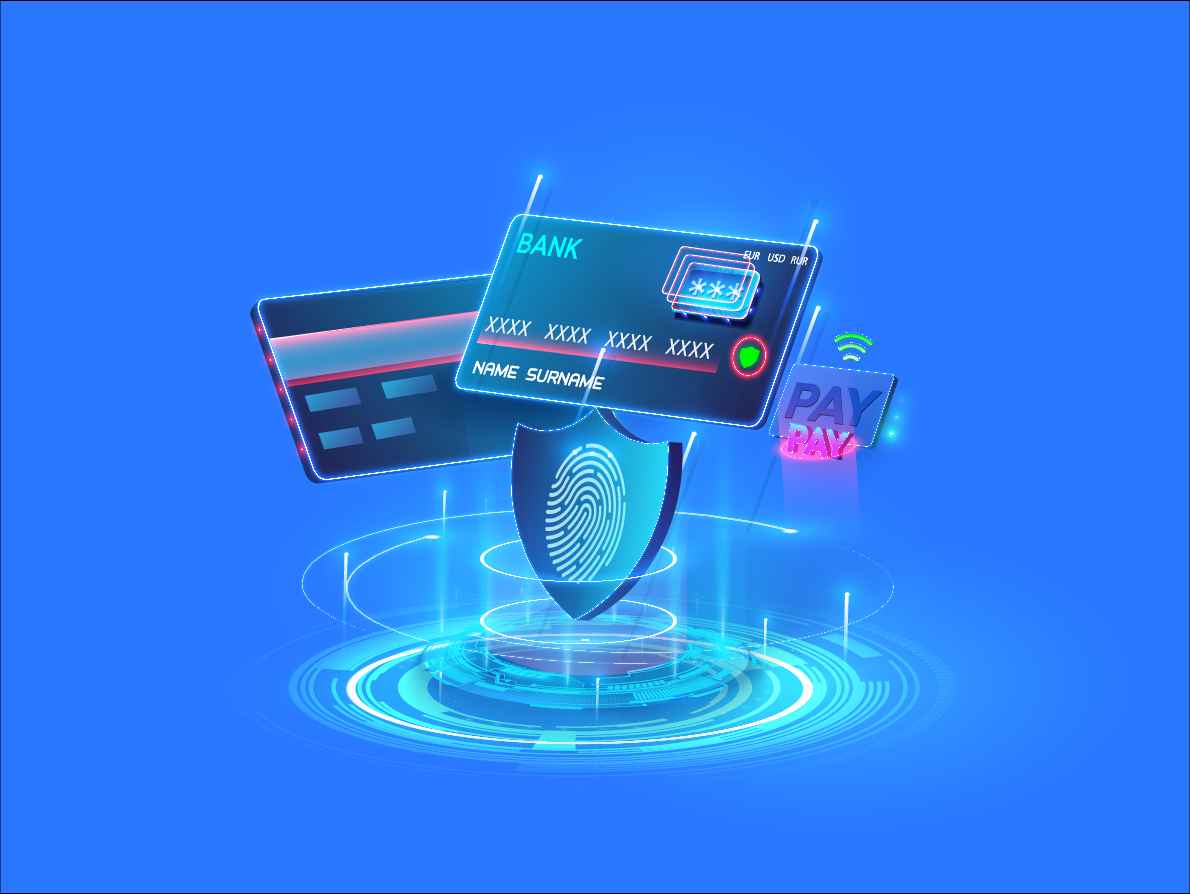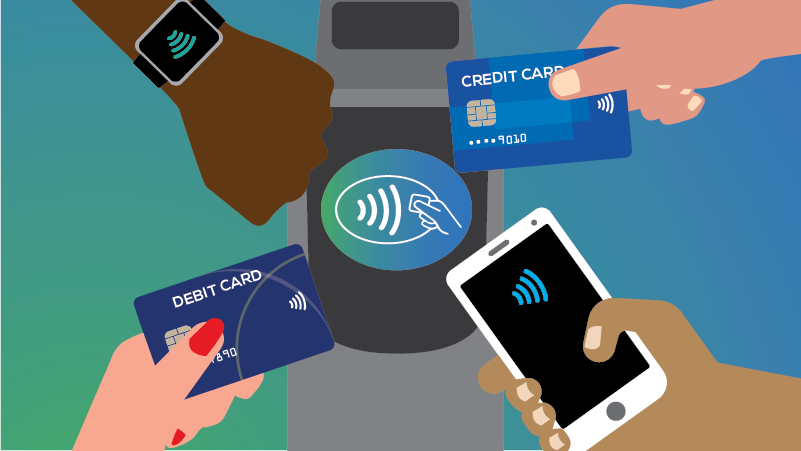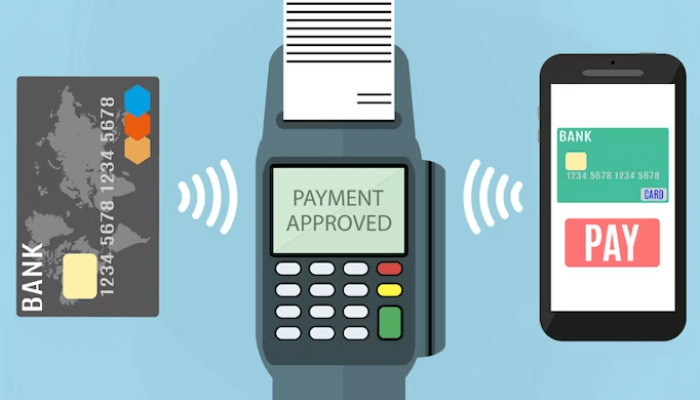Imagine waving goodbye to passwords and hello to your unique traits securing your cash. That’s what biometric authentication for digital payments offers. But is your money truly safer with it? Dive into the tech that’s transforming how we protect our transactions. I’m here to guide you through the ins, the outs, and the all-arounds of this game-changing security measure. We’ll compare different methods, explore how they stop fraud, and look at their impact on your payment experience. Get ready to unlock the future of finance, where your face, fingerprint, or even your heartbeat could be the key to your financial fortress.
Understanding the Landscape of Biometric Technology in Digital Payments
The Rise of Biometric Authentication
Once upon a time, keeping money safe meant a heavy safe and a strong key. Today, it’s a game of high-tech smarts. Our money lives in digital form, on phones and online. How do we keep it from sneaky hackers? Enter biometric authentication – a fancy term for using body traits to prove we are who we say we are.
Imagine buying sneakers online. Instead of typing a password, just show your face or tap a finger. Quick, isn’t that? That’s the magic of facial recognition transactions and fingerprint payment security. More and more, folks are trusting their unique traits – like their voice or even the patterns in their eyes – to keep their cash secure when shopping online.
Comparing Biometric Methods: From Fingerprints to Facial Recognition
Let’s look at our line-up of biometric stars! Each one has its own superpower in protecting your bucks. Fingerprint scanners and finance? A classic duo. Your unique swirls and whirls unlock your banking apps, just like a superhero’s secret badge. Facial recognition technology steps it up by scanning your whole face – think of it as your personal ID card, only a lot harder to fake!
Voice biometrics in banking is like your vocal secret handshake. Only your voice can say “yes” to buying that new book. Then there’s iris scanning for online purchases; your eyes become a passcode more secretive than any number you could punch in.
Mobile wallets get beefed up with biometric sensors, too. Every time you pay with your phone, these sensors check you’re the real deal. Touch ID for payment apps, retina scan for secure checkout – they’re all part of the gang keeping your dollars safe.
And, have you heard about palm vein payments? It sounds like sci-fi, but it’s real! The unique veins in your hand confirm it’s you, and only you, paying for that cool gadget.
Wait, there’s even more! Multi-factor authentication ropes in extra checks for a tighter fort around your funds. Think of it as a combo meal – something like your fingerprint plus a pin code equals better protection.
So, what’s the catch? With great power comes great need for responsibility. Biometric data protection is serious stuff. If someone gets a hold of your biometric info, that’s bad news. That’s why the folks making these systems work hard to keep your details under lock and key. They’re the guardians of your biometric keys to the treasure chest.
Why all this buzz about biometrics in banking? Simple. They’re quick, safe, and you can’t forget them at home like your password or keys. As we shop more with a click or a tap, secure digital transactions become super important. Biometrics are here to save the day, keeping our digital wallets snug as a bug in a rug.
Remember, with your face, finger, voice, or eye in charge of your money, each time you check out is like a secret mission. Only you’re the agent, and the prize – well, that’s keeping your hard-earned cash safe and sound.
How Biometric Authentication Enhances Financial Security
The Role of Biometrics in Preventing Fraud
Imagine someone steals your credit card. Now, they can buy stuff with your money, right? Not if you use biometrics! Biometrics are traits like your fingerprint, your face, or your voice that are unique to you. So, when you use biometrics in banking, only you can access your money. It’s like your body is the key!
You might have heard about fingerprint payment security. When you pay with a fingerprint, no one else can pretend to be you. That’s because everyone’s fingerprint is different. It’s a quick check to see it’s really you paying. Fingerprint scanners and finance go hand in hand these days. They help keep sneaky folks from getting your money.
And it’s not just about touch. Facial recognition transactions use your face to make sure it’s you. Voice biometrics in banking check how you sound. Iris scanning for online purchases looks at your eye! All cool ways to stop fraudsters.
Multi-layered Security: Combining Biometrics with Other Authentication Methods
But wait! What if we add another step? That’s where multi-factor authentication comes in. It’s when you use more than one check to prove it’s you. Like how mobile payment security can ask for your fingerprint and a password. It’s like having two locks on your door instead of one.
Biometric sensors in mobile wallets mean you can tap to pay with peace of mind. Want to buy something online? Maybe there’s a retina scan for secure checkout waiting for you. Or a voice authorization for online buys. Palm vein payments might sound like sci-fi, but they’re real too!
Think of all the ways you can shop. There’s face ID for banking apps, and touch ID for payment apps. These are part of secure digital transactions. They’re like guards making sure no one but you can pass.
So, next time you use your phone to buy a toy or grab a snack, remember the smart tech at work. Secure contactless payments are cool. They make life easy and keep your money safe. This is how biometric authentication helps you keep what’s yours, yours!
No need to worry about someone copying your key. Your biometrics are yours alone. That’s some top-notch protection, right there. And as these tech wonders get even better, shopping online is going to stay safe and fun. Thanks, biometrics!
User Experience and Adoption of Biometric Systems in Finance
Balancing Security with Convenience in User Authentication
When you shop online or use banking apps, you want it fast and easy. Think about when you use your fingerprint to unlock your phone. It’s quick, right? That’s how fingerprint payment security works. It makes buying stuff online easy and keeps your money safe.
Now, I work with this cool tech every day. I help banks and shops add this to their apps. They always ask, “Can we make it safer but still keep it simple for everyone?” My answer is yes. We use things like face ID for banking apps. This lets you in with just a look. We also use voice biometrics in banking. You say something, and bam, you’re in!
Even better, we’ve got biometric sensors in mobile wallets. They check things unique to you, like your iris pattern when you look at your phone, before you buy that new game. This tech is always checking to make sure it’s really you.
Trends in Biometric Payment Adoption and Consumer Trust
Guess what? More and more people are paying by just using their face or finger. We call this facial recognition transactions. It’s not just cool, it’s super safe. With each day, more folks trust this way to buy things. It’s all about keeping bad guys away from your cash.
So, when you use touch ID for payment apps, know that behind that simple tap is some serious tech. This tech makes sure that nobody else can pretend to be you. It’s like having a superhero guard your wallet.
And here’s something neat – retina scan for secure checkout. You look at your screen, and that’s it! Your shopping is paid for. We’re still working on making this everywhere, though.
Did you hear about palm vein payments? It’s a new thing where you pay with a wave of your hand. Cool, right? Well, that’s what I do. I test these things and then teach shops how to use them. We’re always asking, “Will people like this? Is it safe enough?” We want you to feel good about how you pay for stuff.
Some folks still worry about all this. They think, “Is my face safe when I pay for things?” I get it. That’s why I also help protect your biometric data. We don’t want anyone stealing your look for sneaky stuff.
Kids, even my grandma uses this stuff. She loves not having to remember passwords. She just uses her face or finger, and that’s it. She’s all set to buy her knitting supplies online. And trust me, if grandma can do it, so can you.
When we look at biometric payment adoption rates, they’re going up. That means more people are getting that this is the safe and easy way to go. I see it happen. In my job, I watch these rates. They tell me, “Hey, people really like paying with a selfie or a finger tap!”
So next time you buy something online, remember that people like me work hard to make it safe and easy. And those biometrics, like your fingerprint or face, they’re super heroes for your wallet.
The Future of Biometric Technology in Secure Transactions
Innovations on the Horizon: Next-Gen Biometric Solutions
Imagine paying with just a smile or a wave. It’s not sci-fi! This future is near. Companies are creating amazing new ways to check who’s buying. This means faster and safer shopping for everyone.
We use fingerprints and face scans now. Next, get ready for palms and voices. Shops could use your unique vein pattern or the way you talk to let you pay.
No need for cards or phones. Just use your body to prove it’s really you. This beats passwords that thieves can steal. It’s all about keeping your money safe by making sure it’s you, and only you, who can spend it.
Many wonder, “Will this new tech work well?” Bet on it! It gets better every day. We keep making sensors and scanners that miss less. That means fewer chances to get it wrong. It gets us closer to fool-proof shopping. No extra waits, no stress, no mix-ups.
But, tech isn’t magic. It needs rules and guards. We must protect people’s data. This is our face, our voice – it’s personal. The law has to keep up, making sure no one uses this info in bad ways.
We need clear rules on how stores and banks handle our biometric data. You wouldn’t want your face data to get lost or misused. Laws must be strict and clear to keep our info in safe hands.
Soon, stores could let you pay by just walking out. Your face or hand would be your ticket. This tech makes things simple, quick, and keeps your cash secure. Plus, it’s cool – like future movies!
Regulatory and Privacy Considerations in Biometric Data Protection
Your privacy matters. So, when we talk about face and fingerprint paying, we can’t skip safety. Each time your face or finger is scanned, that’s your private info going out.
So, who watches the watchers? We need tough rules to guard our biometric data. These rules must make sure our data stays ours. We need trust. Without trust, this great tech could hurt more than help.
What’s the big worry? Bad folks getting our data. If they do, they could fake our ID, or worse. But if the rules are tough and smart, we can all trust the system better.
We can look at old laws and learn. For banks, for the web, we made rules to keep data safe. Now, we add biometrics to that list.
The goal? To make sure your scan stays your scan, and no one else’s.
In short, we must make sure this tech helps us, without risking our privacy. We want shopping to be a breeze. But we also want no doubts that it’s us in the system, and our info stays put.
To wrap it up, we are at a turning point. Biometric tech in buying is growing fast. It’s getting smarter and more common. But, as we move ahead, we must watch out for our data and keep it locked tight. Your safety in this new world of paying is key.
In this post, we’ve walked through the world of biometric tech and how it’s changing the way we handle money. We’ve seen the growth of biometrics like fingerprints and facial scans. These tools fight fraud and make it safer to buy and bank online. We’ve also learned that when we layer these tools with other checks, security gets even tougher.
We looked at how making things easy for users is key to getting them to trust and use these new methods. People want quick and simple ways to pay without giving up safety. This balance is what will make biometric payments more popular.
Lastly, we eyed the future, spotting the cool new forms of biometrics that are coming soon. We also touched on the big rules and privacy stuff that comes with using our body’s details to prove who we are.
Here’s the main take: Biometric tech means smarter security and easier use, which is awesome for everyone. As we look ahead, it’s about keeping that stuff safe and sound while pushing the tech to new heights. Trust in these systems will shape how we pay and protect our money. Let’s embrace the change, stay safe, and keep things simple.
Q&A :
What is biometric authentication in digital payments?
Biometric authentication in digital payments refers to the use of unique biological characteristics, such as fingerprints, facial recognition, voice patterns, or iris scans, to verify the identity of a user when making cashless transactions. This security feature enhances the safety of transactions by ensuring that only authorized users can access payment systems and complete a transaction.
How does biometric authentication improve digital payment security?
Biometric authentication improves the security of digital payments by providing a layer of verification that is extremely difficult to replicate or forge. Traditional authentication methods like passwords and PINs can be guessed or stolen, but biometric data is inherently personal and unique to each individual, thus reducing the risk of fraudulent transactions and unauthorized access to payment accounts.
Are there any privacy concerns with using biometrics for digital payments?
Yes, there are privacy concerns with using biometrics for digital payments, as biometric data is sensitive information. If not handled properly, it can be susceptible to theft, hacking, or misuse. It is crucial for digital payment providers to employ robust data protection measures, including secure data storage and encryption, to safeguard users’ biometric information.
What types of biometric authentication are most commonly used for digital payments?
The most commonly used types of biometric authentication for digital payments include fingerprint scanning, facial recognition, and iris scanning. Fingerprint scanning is widely used due to its ease of integration in mobile devices, while facial recognition is gaining popularity with the advances in camera technology and artificial intelligence. Iris scanning is considered highly secure and is used in scenarios requiring higher levels of security.
Can biometric authentication be used on all digital payment platforms?
Not all digital payment platforms currently support biometric authentication, but its adoption is increasing rapidly. The availability of biometric authentication depends on the platform’s infrastructure, the device’s capabilities, and the security requirements of the payment service. As technology evolves and consumer demand for secure and convenient payment methods grows, more platforms are expected to incorporate biometric authentication options.



